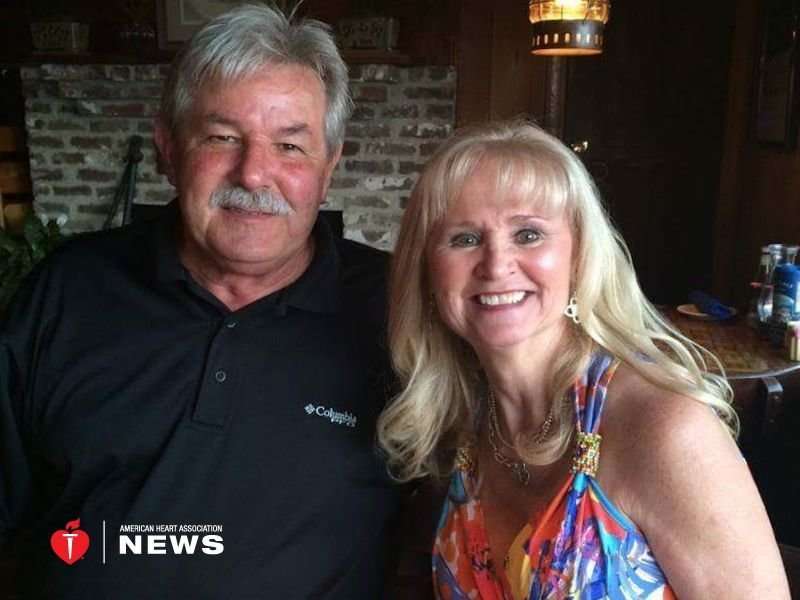Retired electrician saved by CPR, jolts from AED

As a retired electrician, David Paschal knows a thing or two about electrical currents. He did everything he could to avoid the unpleasant feeling of getting shocked, especially since it also carried the risk of being electrocuted.
So when emergency responders kept administering shocks to his heart en route to Tidelands Georgetown Memorial Hospital on May 10, 2017, he apparently didn't like it.
"They said I fought like a mad person," Paschal recalled, laughing. I knew good and well what it was, and I didn't want it."
Paschal needed the shocks—all 14 of them.
Earlier that day, the 66-year-old Paschal was helping a crew prune trees at his home in Pawleys Island, South Carolina.
"I hired some young fellas to come over and do some trimming," Paschal said. "I was trying to keep up with the young people."
He was pulling branches to the road when arm and chest pain started. He decided he'd better get to his doctor's office.
"I had a brand spanking new doctor," Paschal recalled, and though he didn't know him well, Paschal wanted his help.
Paschal walked in and told the receptionist, "I'm having a heart attack."
"And then I fell right over on the sofa," he said.
The office staff rushed Dr. R. Andrew Philipp II from an examining room to Paschal's aid.
"I did a pulse check, and there was no pulse," Philipp said. "He was not breathing."
Philipp started CPR and Paschal regained a pulse. But Paschal's heart couldn't sustain a healthy rhythm. He went into ventricular fibrillation, a life-threatening heart rhythm in which the lower chambers of the heart quiver, causing the heart to stop.
Philipp used an AED, automated external defibrillator, to deliver an electric shock that can jolt a heart into a normal rhythm.
"There was no time to spare," said Gail Paschal, David's wife. "If Dr. Philipp hadn't started CPR, if David had been at home."
About 70 percent of out-of-hospital cardiac arrests happen at home, which is why experts recommend everyone learn Hands-Only CPR. There are only two steps: call 911, then push hard and fast in the center of the chest, preferably to the beat of the classic disco song "Stayin' Alive," until help arrives.
Philipp, of course, had been in many life-threatening situations, but never one like this.
"It was very emotional, very hard to see someone you've worked hard to keep healthy dying in my office," he said.
Philipp also remains awed that Paschal could endure 14 shocks.
"It's a testament to the [CPR] guidelines," he said. "If you're prompt with your care, you can have good outcomes."
Paschal considers that good outcome a miracle. He followed it with 13 weeks of cardiac rehabilitation.
"They really got him back in good shape," Gail said.
Both Paschals credit the quick action by Philipp and his staff, and the importance of CPR.
"I think it's a wonderful CPR lesson," Gail said. "There was no time to spare, but they did what they needed to do."
Paschal doesn't do a lot of yard work these days. Instead, he likes to spend time on the fairways of nearby golf courses.
"I'm not doing a whole lot of work," he said. "But I'm sure enjoying life."
Copyright is owned or held by the American Heart Association, Inc., and all rights are reserved. If you have questions or comments about this story, please email editor@heart.org.




















